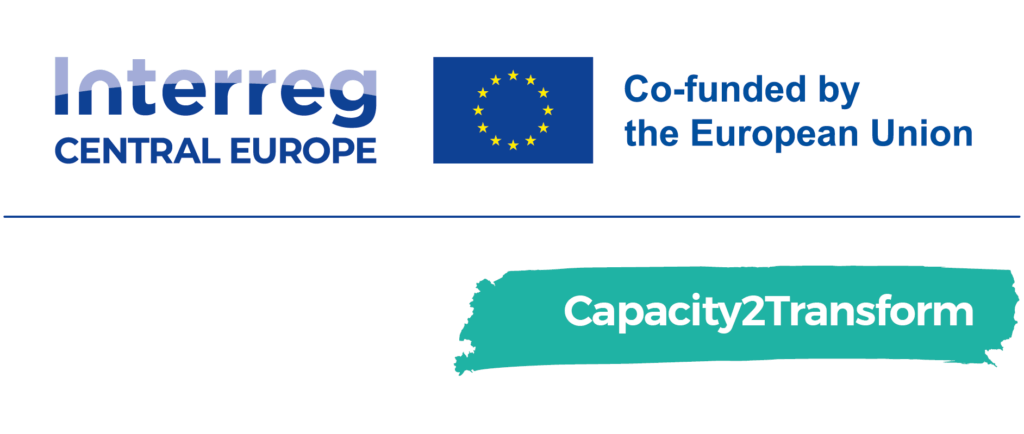Margherita is a young entrepreneur with a clear and captivating vision: to organize clothing swap events inside hostels, transforming these places into meeting points and community spaces. Her project, Swap Party, was born out of a sensitivity to environmental sustainability and a passion for human relationships. The idea is simple yet powerful: to create moments where people can bring clothes they no longer use and exchange them with others, giving garments a new life while also creating light, inclusive social event.
Attending a Swap Party event is like crossing a threshold between the everyday and the unexpected. The hostel spaces—often the lobby or lounge area—come to life: tourists and neighborhood residents mingle, mixing languages, ages, and styles. Clean, well-maintained clothes hang from organized racks, each with a story ready to be shared. People who come to exchange clothes often stay to meet new people and discover a place they may have never entered before as it usually lived by just the tourists. The hostel transforms: from a place just for sleeping to one of experience, exploration, and connection. For hostel managers, this means attracting a new audience, strengthening the identity of their space, and demonstrating real commitment to contemporary values like sustainability and circularity. Swap Party creates connections, and that changes how the space is used and perceived—not just transit, but community.
But the strength of the project goes beyond the event itself. Margherita envisioned a scalable format, replicable in various cities, where she wouldn’t just organize the events herself, but build a network of local organizers. Her model combines environmental impact, cultural development, and economic opportunities. The events thus become a sustainable experience that brings value to hostels, participants, and the environment. During her experimentation in several hostels around Venice, Margherita validated her intuition but also encountered logistical issues, unclear agreements, and organizational challenges. That’s why the design research unit of Università Iuav di Venezia, during the Co-Creation workshop for C2T, has decided to support her growth with a focus on Service Design.
What is Service Design?
Service Design is a discipline that focuses on designing services with the user experience at the center. It’s not only about what is offered, but how it is offered: what processes are involved, what the user touchpoints are, and who does what behind the scenes. As the Service Design Network explains, it’s an approach that helps innovate and improve services, making them more desirable for users and more effective for organizations.In other words, it’s a tool for making the often “invisible processes” behind a business idea visible, understandable, and improvable. Service Design allows you to see your project as a system of relationships, flows, and actions—a map to guide decisions and priorities.
To make the complexity of a service more understandable and manageable, Service Design relies on a set of visual and strategic tools that help map out both the experience and the system that supports it. Among the most widely used are the User Journey, the Stakeholder Map, and the Service Blueprint. The User Journey is a visual narrative that traces the steps a user goes through when interacting with a service. It reveals not just what happens at each phase—from discovering the service, to using it, to reflecting afterward—but also what the user thinks, feels, and needs at every step. This tool helps identify critical moments, emotional highs and lows, and potential friction points. For a project like Swap Party, mapping the User Journey means understanding how people perceive the experience: How do they hear about the event? What do they expect? What do they feel when they enter the hostel and start browsing the clothes? These insights allow designers to fine-tune every touchpoint so the service becomes not only efficient but also meaningful and memorable. The Stakeholder Map, on the other hand, is used to visualize all the actors involved in a service and their relationships. It shows the connections—both visible and invisible—between organizers, users, suppliers, partners, institutions, and other relevant players. The goal is to make interdependencies and flows of value (such as money, goods, data, or trust) explicit. In the case of Margherita, this tool was key to understanding how hostel managers, event participants, local agencies, and sustainability partners like eco-logistics companies could work together to support and enhance the experience.
Lastly, the Service Blueprint is a comprehensive map of how the service functions “behind the scenes.” It breaks down the service into layers: what the user sees (visible actions), what happens backstage (staff actions and support processes), and the resources or technologies that enable it all. This tool helps teams coordinate, standardize, and eventually scale their operations. For entrepreneurs like Margherita, the blueprint becomes a practical foundation—turning instinctive or improvised actions into replicable and teachable procedures. It’s not just a guide, but a strategic asset that reduces chaos and increases clarity. Together, these tools empower entrepreneurs to see their ideas not only as isolated events but as complex ecosystems. They bridge imagination and execution, making it possible to design services that are people-centered.
The Journey with Margherita
The journey with Margherita lasted a week and was divided into three phases. In the first phase, she shared her experience: the first events she had organized, the logistical problems, communication issues with hostel managers, and the time-consuming nature of her work. The second phase focused on introducing Service Design tools: the Stakeholder Map, User Journey, and Service Blueprint. It was during this phase that Margherita had a real breakthrough: she realized that her business wasn’t just the event, but the entire experience as perceived by users, organizers, and partners.
The Stakeholder Map allowed her to visualize all the actors involved and the exchanges between them—not just clothes, but also data, trust, and collaboration. This helped her imagine new partnerships, such as with companies that provide electric vehicles for logistics, aligning with her environmental values. With the User Journey, she was able to map the user’s experience in all its phases, identifying touchpoints that could carry and communicate the project’s core values. She realized that each moment—from promoting the event to welcoming guests to the actual clothing swap—was an opportunity to convey sustainability, connection, and care. Finally, the Service Blueprint became a strategic turning point. It laid out the entire organization of the service, transforming a fragmented and exhausting activity into a replicable system. This tool made the steps she had already tested more tangible, efficient, and improvable.
From Doing to Orchestrating—Margherita’s True Transformation
Through Service Design, Margherita has envisioned a future where her business becomes a widespread cultural, economic, and environmental ecosystem. Her goal is to build a network of local organizers trained through dedicated modules and supported by a central platform offering tools, materials, guidelines, and technical support. In this model, each event maintains its local uniqueness but benefits from a shared identity and consistent quality. Over time, Swap Party could generate measurable impact: tons of clothing saved from waste, new neighborhood dynamics, and emerging social relationships. Sustainability becomes something lived and practiced. And as often happens with well-designed projects, it grows over time—alongside those who create it.
Margherita’s Service Design journey wasn’t just technical support for organizing a growing idea. It was a complete shift in perspective. At first, Swap Party was a hands-on, demanding activity where the main challenge was holding everything together: clothing logistics, hostel contacts, event promotion, and personal travel. Every task required energy, presence, and constant problem-solving. Through Service Design, however, Margherita made a qualitative leap. She realized that her true enterprise was not about organizing events—it was about designing a system. A system that thrives on well-structured relationships, clear processes, and coordination tools that make the invisible visible—and therefore shareable. Service Design served as her compass: it didn’t simplify complexity, but it made it manageable.
Designing with a map in hand meant Margherita no longer felt alone in carrying the weight. She gained a language to explain her idea, to involve partners, to train new organizers, and to communicate effectively with hostel managers. More importantly, it allowed her to envision a future where her business could grow without needing her on the front lines—where it could scale, replicate, and evolve collaboratively.
That may be the most powerful transformation: the shift from operational leadership to systemic leadership. In this sense, Service Design is not just a tool for efficiency—it’s a lens for seeing your business as an ecosystem, and learning how to care for it with skill, creativity, and courage. Today, Swap Party is a stronger project—and so is Margherita. Because she has learned that to truly sustain an idea over time, you need not only passion, but a vision that embraces complexity without being overwhelmed by it. And Service Design has been, on this journey, her most reliable traveling companion
Share the article

